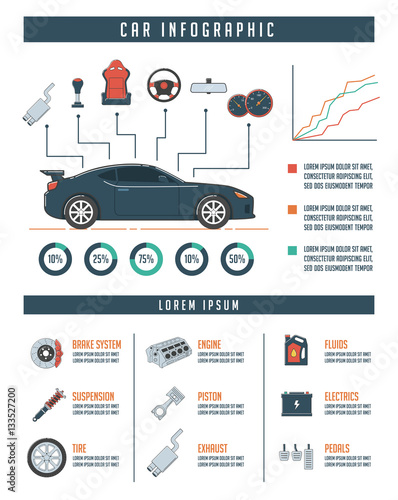Recognizing Your Auto'S Caution Lighting: What Do They Really Mean?
Recognizing Your Auto'S Caution Lighting: What Do They Really Mean?
Blog Article
Authored By-Cummings Dreier
When you're behind the wheel, those beautiful warning lights on your dashboard can be a bit complicated. Do you understand what they're trying to tell you regarding your automobile's health? Recognizing the relevance of these lights is important for your safety and security and the longevity of your lorry. So, the next time among those lights appears, wouldn't you wish to decode its message accurately and take the required actions to address it?
Common Warning Lighting and Interpretations
Determine common warning lights in your automobile and recognize their significances to guarantee safe driving.
The most normal warning lights include the check engine light, which signifies problems with the engine or discharges system. If this light begins, it's critical to have your car examined immediately.
The oil pressure cautioning light indicates reduced oil pressure, needing prompt interest to stop engine damages.
A blinking battery light may recommend a defective charging system, possibly leaving you stranded otherwise dealt with.
The tire stress monitoring system (TPMS) light alerts you to reduced tire stress, impacting car security and fuel effectiveness. Overlooking this might lead to harmful driving problems.
The abdominal muscle light suggests an issue with the anti-lock stopping system, compromising your ability to stop rapidly in emergencies.
Finally, linked website alerting light warns of engine getting too hot, which can result in severe damages otherwise fixed quickly.
Understanding these typical warning lights will help you attend to concerns quickly and preserve secure driving problems.
Relevance of Prompt Interest
Comprehending the common warning lights in your auto is just the initial step; the importance of promptly dealing with these cautions can't be highlighted sufficient to ensure your safety when driving.
When a caution light illuminates on your control panel, it's your vehicle's method of communicating a prospective concern that needs focus. Disregarding these cautions can bring about much more extreme problems later on, jeopardizing your safety and potentially costing you a lot more in repairs.
Trigger interest to alerting lights can stop failures and accidents. As an example, a blinking check engine light could indicate a misfire that, if left neglected, could create damage to the catalytic converter. Addressing this promptly can conserve you from an expensive repair work.
In a similar way, a brake system warning light might signify reduced brake liquid or used brake pads, critical parts for your safety when driving.
Do It Yourself Troubleshooting Tips
If you notice a warning light on your dashboard, there are a couple of do it yourself troubleshooting pointers you can try before seeking professional assistance.
The first step is to consult your auto's handbook to understand what the specific caution light indicates. In some cases the problem can be as easy as a loose gas cap setting off the check engine light. Tightening up the gas cap might solve the issue.
Another common problem is a low battery, which can activate various warning lights. Inspecting the battery connections for corrosion and guaranteeing they're safe may deal with the trouble.
If a caution light continues, you can attempt resetting it by separating the cars and truck's battery for a couple of minutes and then reconnecting it. Furthermore, inspecting your automobile's fluid degrees, such as oil, coolant, and brake liquid, can help fix warning lights associated with these systems.
truck brake repair
To conclude, recognizing your auto's caution lights is vital for maintaining your vehicle running efficiently and securely. By quickly addressing these notifies and understanding what they imply, you can avoid pricey repair services and possible failures.
Keep in mind to consult your vehicle's handbook for specific information on each warning light and take action accordingly to ensure a trouble-free driving experience.
Stay educated, stay risk-free when traveling!
